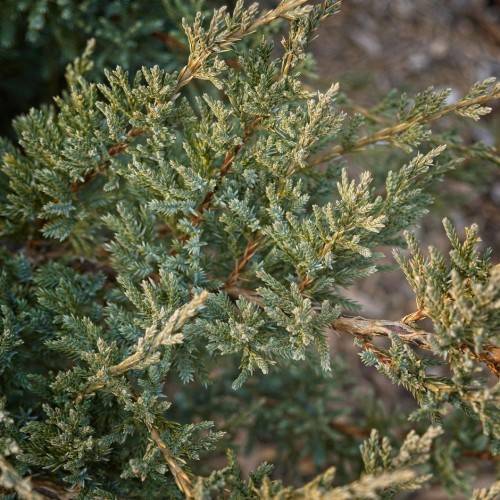
singleseed juniper
Juniperus squamata 'Holger'
Also Known As - Singleseed Juniper,Blue Star juniperCycle:
Perennial
Watering:
Average
Hardiness Zone:
4
Flowers:
Flowers In Spring
Sun:
Full sun, Part sun/part shade
Soil:
Rocky , gravelly , dry, Well-drained
Fruits:
Fruits In Autumn Ready In Fall
Leaf:
Yes
Growth Rate:
Low
Drought Tolerant:
Yes
Salt Tolerant:
Yes
Thorny:
Yes
Care Level:
Moderate
watering
Singleseed juniper (Juniperus squamata 'Holger') enjoys a well-drained soil, regular watering and some direct sunlight. Water your plant approximately once a week, with a long, deep soak each time. If the soil is damp, there may be little need for additional watering. During dry or hot periods, increase the frequency of watering so that your plant does not become excessively dry. If the temperature rises above 90ºF (32ºC), the plant may require more watering. Overwatering can cause diseases and may even damage the roots of the plant. If you see any signs of yellowing or wilting, reduce the amount of water you give your plant and check the soil for sogginess. In the winter months, you can reduce the amount of water you give the plant. It should still receive enough to keep the soil from drying out, but it will not need regular, deep watering.
sunlight
The singleseed juniper (Juniperus squamata 'Holger') is an evergreen coniferous shrub that thrives in sunny areas and requires 6 to 8 hours of sunlight daily. This species prefers full sunlight in the morning and partial shade in the afternoon when temperatures become too hot. Sunlight is essential for optimal growth and health of this plant species. Without enough sun, singleseed juniper can become sparse and the foliage appear more dulled. It is therefore important to provide the plant with ample sunlight and the ideal location for this species should have full sun exposure in the morning and a spot with some afternoon shade.
pruning
When to Prune Singleseed Juniper: Singleseed juniper should be pruned in late spring to early summer. This will help ensure that new growth has time to develop before cooler weather sets in. How Much to Prune Singleseed Juniper: Pruning should be done gently and selectively. Generally, you should remove no more than 1/3 of the plant, focusing on removal of dead or damaged branches, as well as crowding of areas. Light removal of growth will encourage a new flush of healthy growth.
